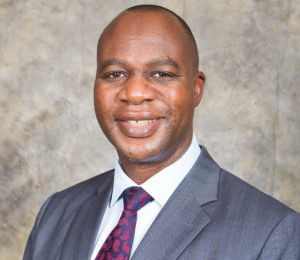
THE Bankers Association of Zimbabwe (BAZ) has welcomed the 2024 Monetary Policy Statement (MPS) released last week, saying they foresee positive outcomes if the authorities implement the outlined reforms.
The country’s financial services sector has been battling a massive confidence deficit for decades brought about by policy inconsistencies, especially around the local currency.
As a result, the public has increasingly avoided traditional banking channels, leading to millions of dollars assumed to be circulating in the informal sector remaining unbanked.
According to the central bank, at least US$2,5 billion is estimated to be in the informal sector.
In an interview with businessdigest, BAZ president Lawrence Nyazema said the fact that the monetary authorities were maintaining the multi-currency system was a positive move.
He said given the authorities had set a reform agenda, commitment to it was key for confidence building in the sector.
“Argentina is one country that went through similar challenges as Zimbabwe. It eventually introduced reforms under a currency board arrangement in 1991,” he said.
“Initially, there was market scepticism due to the history of previous failed policy reforms.
- Banks exploring lending in forex
- Zimbabwe dollar loans rise
- Zim must address high sovereign risk
- Correspondent banking platform built for local banks
Keep Reading
“However, confidence increased with time as the authorities demonstrated their commitment to back the local currency with forex reserves, as well as sustain the convertibility of local currency to foreign currency and vice versa,” Nyazema said.
He said the Zimbabwe authorities had set the reform programme in motion and that confidence would be built as the authorities follow through on the planned reforms and commitments.
Driving the depreciation of the local currency has been the constant rise in money supply with no commensurate economic growth, market confidence, commodity, or foreign currency backing.
Reserve Bank of Zimbabwe (RBZ) governor John Mushayavanhu admitted that an unchecked base money growth causes inflation and undermines the stability of the exchange rate.
Thus, the RBZ intends to strategically manage money supply growth through a disciplined culture in sync with improved economic activity and increased reserves.
The reserves will be in the form of precious minerals, mostly gold, and foreign currency.
“The bank’s money supply management policy thrust will ensure that reserve money growth is contained within the limits of growth in gold and foreign currency reserves,” Mushayavanhu said.
“The bank will continue to maintain a tight monetary policy stance to ensure sustainability of the monetary anchor.
“Efficient management of liquidity and money supply will entail the discontinuation of all quasi-fiscal activities, and alignment of interest rates with positive real rates and exchange rate expectations.
“The bank will strictly adhere to statutory limits on bank lending to the government.”
Unfavourable polices have also seen the banking populace battling high interest rates and bank charges. But, through the MPS, however, the RBZ calibrated the bank policy rate from 130% to 20%.
Nyazema said this mostly reduced interest income on the local currency loan books of banks, particularly on the existing local currency one.
“For companies or clients, it makes credit affordable, which reduces financing costs, and may lead to increased demand for loans," he said.
"However, financing costs are not the only cost component for companies.”
To alleviate bank charges, the central bank directed that financial institutions should not charge monthly account maintenance fees on balances of US$100 and below or ZiG equivalent, a notable disincentive to banking.
The central bank also pegged the overnight accommodation interest rate at 5% above the bank policy rate and the bank deposit facility interest rate at 7,5% below the bank policy rate. This gives a starting interest rate corridor of between 11% and 25% per annum.
The bank policy rate and the corresponding interest rate corridor will be reviewed by the monetary policy committee from time to time in line with inflation developments.
Minimum savings and time deposits interest rates on ZiG are set at 9% and 7,5%, respectively, below the bank deposit facility rate of 12,5%.







